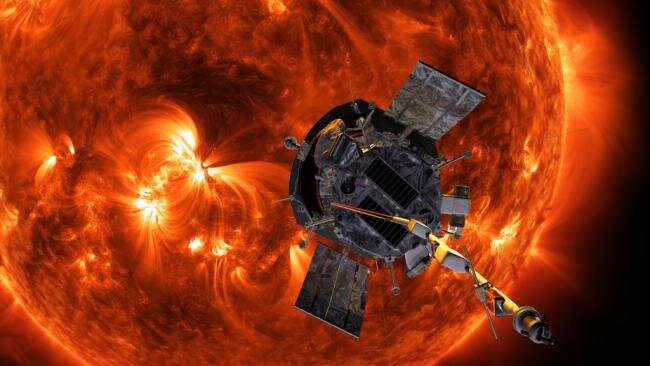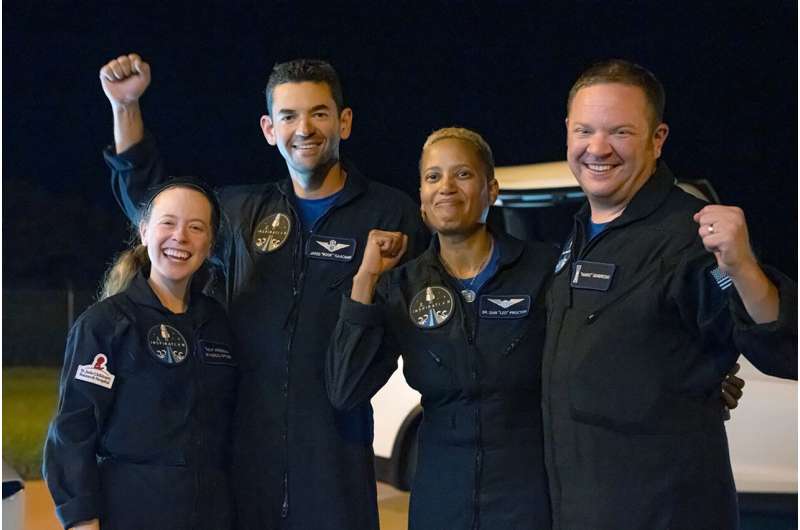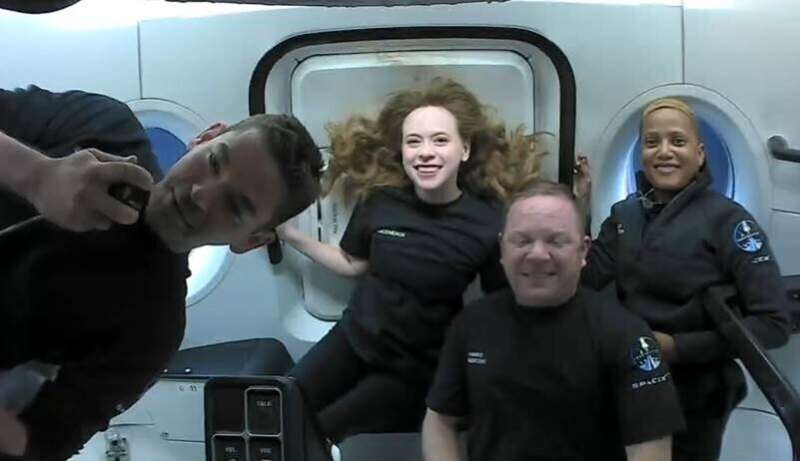
Copernical Team
A catalog of solar stream interactions

When a fast solar wind stream erupts from a coronal hole (a cooler region in the Sun's atmosphere) and overtakes a slower moving solar wind stream, a stream interaction region (SIR) can form. In the SIR, a density "pileup" of compressed plasma develops upstream of the interface; typically there is a peak in pressure followed by a rarefaction region in the fast solar wind component. As the SIR propagates away from the Sun, to distances of one astronomical unit or beyond, the compression can form a shock that efficiently accelerates charged particles.
Swimmers show sporting success using satellites

Athletes who participated in an open-air mass sporting event at the weekend had images of their sporting prowess sent to family and friends within seconds, thanks to a space-enabled app.
Joining forces for Aeolus

For a team of scientists and technicians from Europe and the US, the fact of ‘going back to the office’ this September has meant heading off to the Cabo Verde islands in the Atlantic – not to extend their summer holidays, but for a complex international experiment campaign that will scrutinise the data being delivered by one of today’s most innovative Earth observation satellites: ESA’s Aeolus wind mission.
Trailblazing tourist trip to orbit ends with splashdown

NASA's Ingenuity Helicopter Captures a Mars Rock Feature in 3D
 NASA's Ingenuity Mars Helicopter provided a 3D view of a rock-covered mound during its 13th flight on Sept. 4. The plan for this reconnaissance mission into the "South Seitah" region of Mars' Jezero Crater was to capture images of this geologic target - nicknamed "Faillefeu" (after a medieval abbey in the French Alps) by the agency's Perseverance rover team - and to obtain the color pictures fro
NASA's Ingenuity Mars Helicopter provided a 3D view of a rock-covered mound during its 13th flight on Sept. 4. The plan for this reconnaissance mission into the "South Seitah" region of Mars' Jezero Crater was to capture images of this geologic target - nicknamed "Faillefeu" (after a medieval abbey in the French Alps) by the agency's Perseverance rover team - and to obtain the color pictures fro China prepares to launch Tianzhou-3 cargo spacecraft
 The combination of the Tianzhou-3 cargo spacecraft and a Long March-7 Y4 carrier rocket has been transferred to the launching area of the Wenchang Spacecraft Launch Site, the China Manned Space Agency (CMSA) said Thursday.
The CMSA said the Tianzhou-3 cargo spacecraft will be launched in the near future at an appropriate time.
The facilities and equipment at the Wenchang Spacecraft L
The combination of the Tianzhou-3 cargo spacecraft and a Long March-7 Y4 carrier rocket has been transferred to the launching area of the Wenchang Spacecraft Launch Site, the China Manned Space Agency (CMSA) said Thursday.
The CMSA said the Tianzhou-3 cargo spacecraft will be launched in the near future at an appropriate time.
The facilities and equipment at the Wenchang Spacecraft L SpaceX all-civilian orbital crew completes historic mission
 Four SpaceX tourists returned to Earth safely on Saturday after spending three days in space, successfully concluding the first orbital mission in history with no professional astronauts on board.
The SpaceX Dragon capsule, whose heat shield allowed it to withstand descent, was slowed down by four large parachutes before splashing into the Atlantic Ocean off the coast of Florida at 7:06 pm (
Four SpaceX tourists returned to Earth safely on Saturday after spending three days in space, successfully concluding the first orbital mission in history with no professional astronauts on board.
The SpaceX Dragon capsule, whose heat shield allowed it to withstand descent, was slowed down by four large parachutes before splashing into the Atlantic Ocean off the coast of Florida at 7:06 pm ( Tom Cruise gets sneak preview from SpaceX's 1st private crew

NASA confirms thousands of massive, ancient volcanic eruptions on Mars
 Scientists found evidence that a region of northern Mars called Arabia Terra experienced thousands of "super eruptions," the biggest volcanic eruptions known, over a 500-million-year period.
Some volcanoes can produce eruptions so powerful they release oceans of dust and toxic gases into the air, blocking out sunlight and changing a planet's climate for decades. By studying the topography
Scientists found evidence that a region of northern Mars called Arabia Terra experienced thousands of "super eruptions," the biggest volcanic eruptions known, over a 500-million-year period.
Some volcanoes can produce eruptions so powerful they release oceans of dust and toxic gases into the air, blocking out sunlight and changing a planet's climate for decades. By studying the topography Justin Simon Shepherds Perseverance through first phase of Martian rock sampling
 The Johnson Space Center scientist was tasked with helping guide the way for mission's first cored Mars rock sample.
The evening of Aug. 1 felt a lot like a birthday to NASA planetary scientist Justin Simon. On that night, Simon attended a virtual watch party for researchers preparing to use NASA's Mars 2020 Perseverance rover to conduct the first detailed study of a candidate rock target
The Johnson Space Center scientist was tasked with helping guide the way for mission's first cored Mars rock sample.
The evening of Aug. 1 felt a lot like a birthday to NASA planetary scientist Justin Simon. On that night, Simon attended a virtual watch party for researchers preparing to use NASA's Mars 2020 Perseverance rover to conduct the first detailed study of a candidate rock target 
